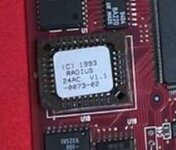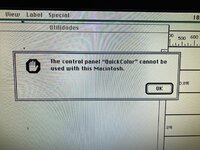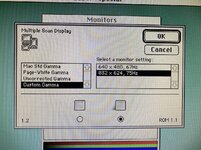pfuentes69
Well-known member
Hello,
I got one of these cards...

As far I can see this is the version sold by Apple of the Radius PrecisionColor Pro 24AC. As per the sticker in the ROM chip, it seems to be version 1.1

I'm using it in my IIci with System 7.5.5 (supposedly it should work as the ROM is 1.1). The card itself works in different resolutions and up to 24 bits, but the acceleration doesn't seem to be active. I tried to install different versions of the QuickColor extension included in RadiusWare, but when starting the extension icon appears crossed out in red, and when trying to open the control panel I get an error.

I wonder if there are other "drivers" apart of the ones from RadiusWare, or if this particular version of the card will not work with 7.5.5
Does anyone has experience with a similar setup (IIci and 7.5.5) ?
Thanks!
I got one of these cards...

As far I can see this is the version sold by Apple of the Radius PrecisionColor Pro 24AC. As per the sticker in the ROM chip, it seems to be version 1.1

I'm using it in my IIci with System 7.5.5 (supposedly it should work as the ROM is 1.1). The card itself works in different resolutions and up to 24 bits, but the acceleration doesn't seem to be active. I tried to install different versions of the QuickColor extension included in RadiusWare, but when starting the extension icon appears crossed out in red, and when trying to open the control panel I get an error.

I wonder if there are other "drivers" apart of the ones from RadiusWare, or if this particular version of the card will not work with 7.5.5
Does anyone has experience with a similar setup (IIci and 7.5.5) ?
Thanks!


